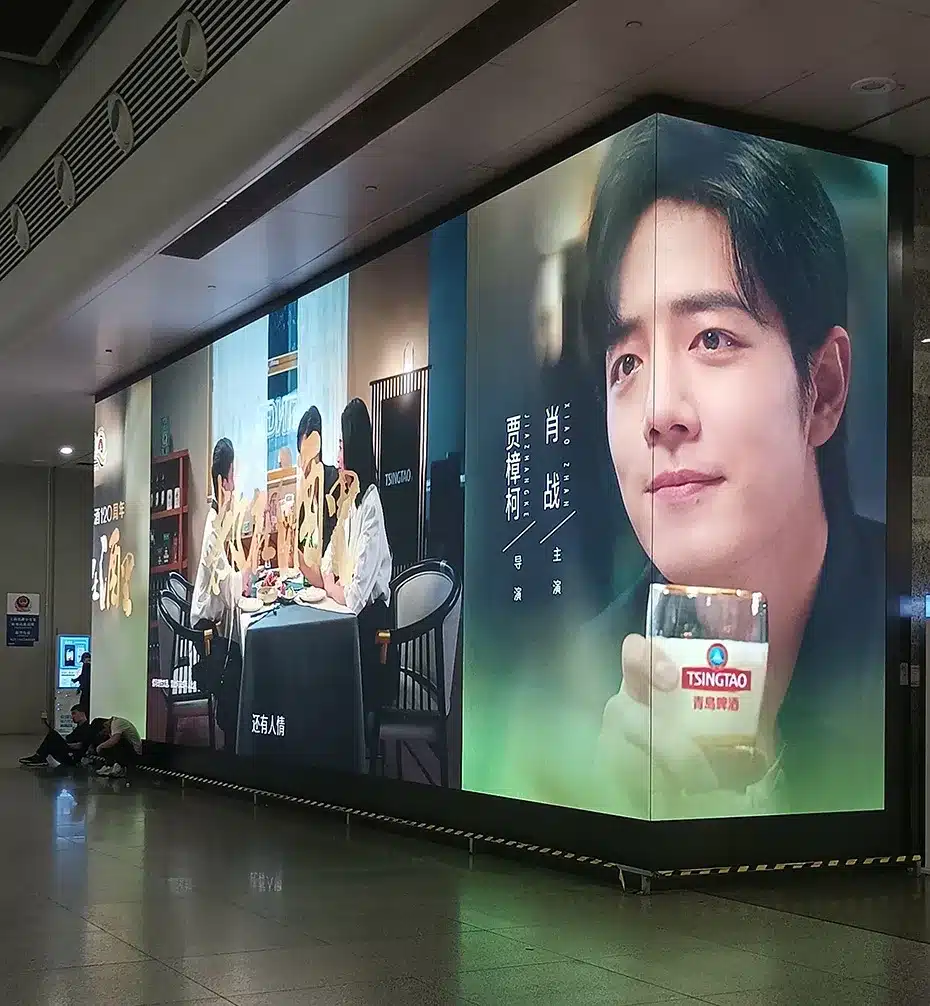The Ultimate Guide to LED Display Pricing: How to Calculate Costs & Key Influencing Factors

LED displays have become an essential tool in various industries, from security monitoring, command centers, advertising, and entertainment to business conferences and commercial displays. However, for many buyers, the price of an LED display remains a mystery.
✨ What determines the price of an LED display?
✨ How can you calculate the cost accurately?
✨ Which factors make an LED screen expensive or budget-friendly?
Let’s dive in and break down LED display pricing step by step! 🚀
1️⃣ How to Calculate the Price of an LED Display? 🧮
Think of pricing an LED display like painting a masterpiece—you need the right tools, materials, and level of detail.
📌 The key cost factors:
✅ Pixel Pitch (P0.9, P1.5, P2, P3, etc.)
✅ Screen Size (The bigger the screen, the higher the cost)
✅ Display Quality (Refresh Rate, Brightness, Contrast Ratio, etc.)
✅ Materials & Technology Used
1️⃣ Pixel Pitch: The Higher the Resolution, the Higher the Price 📏
- Smaller pixel pitch = sharper images but also higher cost.
- A P0.9 screen is several times more expensive than a P3 screen due to its higher density of LED chips.
- Think of pixel pitch like a camera’s megapixels—the more pixels, the better the clarity but at a higher cost.
📸 [Image of pixel pitch comparison]
2️⃣ Screen Size: The Bigger the Display, the Higher the Cost 📐
- A larger LED screen requires more LED modules, higher power consumption, and more structural support.
- Example:
- A 2m x 1m LED screen is significantly cheaper than a 6m x 4m screen due to higher material & installation costs.
- Tip: Always select a screen size that fits your budget and viewing distance.
📸 [Image showing different LED screen sizes and costs]
3️⃣ Display Performance: Refresh Rate, Brightness & Color Accuracy 🔥
- Refresh Rate – Higher refresh rates (≥1920Hz) eliminate flickering, making content smoother.
- Brightness (measured in nits) – Outdoor displays require higher brightness (≥4500 nits) to be visible in daylight.
- Viewing Angle & Color Accuracy – Higher-end screens provide better color uniformity and wider viewing angles.
📌 If you need ultra-smooth animations & video playback, you must invest in a high-refresh-rate screen!
📸 [Comparison of LED screens with different refresh rates]
2️⃣ What Factors Affect LED Display Pricing? 🏷️
Why do some LED screens cost more than others? Let’s break down the main cost drivers.
✅ 1. Cost of Raw Materials 🏗️
- LED chips, driver ICs, power supplies, and PCB boards make up the bulk of the cost.
- High-end brands (NationStar, Nichia, Cree) provide better quality LEDs with longer lifespans but at a higher price.
- Cheap, low-quality LED chips burn out faster and have poor color uniformity.
📸 [Image comparing high-end vs. budget LED chips]
✅ 2. Manufacturing & Production Techniques 🏭
- Advanced LED manufacturing = better quality but higher costs.
- COB & SMD technologies (used in premium screens) increase durability and reduce maintenance costs.
- Die-cast aluminum cabinets provide better heat dissipation than traditional steel cabinets but are more expensive.
📌 Key takeaway: Better technology = higher quality = higher cost but better long-term value!
✅ 3. Market Competition & Supply Chain 🔄
- More competition = better deals for buyers.
- Supply & demand affect pricing – LED screens can be cheaper during off-seasons and expensive during high-demand periods.
- Import & export tariffs also influence pricing (especially for international buyers).
📸 [Image showing LED price trends over time]
✅ 4. Installation & Support Costs 🏗️
- Fixed Installation vs. Rental LED Screens – Rental screens (used for events) have quick assembly features and lightweight design, making them more expensive.
- Indoor vs. Outdoor Screens – Outdoor screens require weatherproof protection, adding to costs.
- After-Sales Support & Warranty – A longer warranty and better support will increase the price but save money in the long run.
📌 Tip: Don’t just look at the upfront price! Factor in installation, maintenance, and support costs.
📸 [Image comparing indoor vs. outdoor LED screens]
3️⃣ The Future of LED Display Pricing: Where Are We Headed? 📈
🌍 The global LED display market is booming, thanks to 5G, IoT, and AI-driven innovations.
🚀 Upcoming trends that will impact pricing:
🔹 MicroLED technology – Higher efficiency, lower power consumption, and longer lifespan.
🔹 Flexible & Transparent LED Displays – More creative applications but at a higher price.
🔹 Smart LED Screens with AI Processing – Auto-brightness control & real-time analytics increasing demand.
📌 As technology advances, we can expect prices to gradually decrease while performance improves!
📸 [Image showing futuristic LED display trends]
Conclusion: How to Get the Best Deal on an LED Display? 🎯
✅ Understand your needs – Do you need high resolution, outdoor durability, or budget-friendly options?
✅ Compare pixel pitch vs. screen size – Smaller pixel pitch = higher cost, but bigger screens also increase expenses.
✅ Check the brand of LED chips & power supplies – High-quality brands = longer lifespan & fewer maintenance issues.
✅ Consider total cost of ownership – Don’t just look at the initial price; factor in installation, maintenance & warranty support.
✅ Negotiate bulk deals – If buying for large projects, request custom pricing from suppliers.
💬 Thinking about getting an LED display? Have questions about pricing? Drop your comments below! 👇👇👇
🚀 Bookmark this guide & share it with your team!